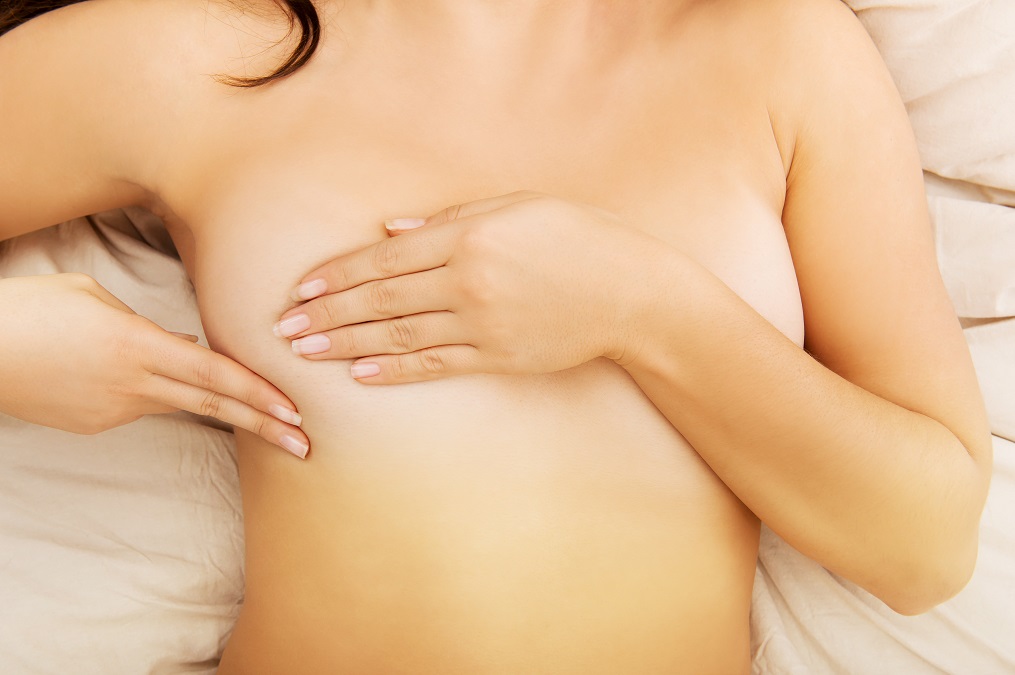This blog is written by our clinicians and aims to keep patients informed with up to date information on medical conditions.
Why and How You Should Examine Your Breasts

Every October, we bring attention to breast cancer, as part of Breast Cancer Awareness Month. Death rates from breast cancer are falling, but breast cancer still remains one of the main causes of cancer deaths in the UK.1 These figures may be frightening, and it can seem like the least stressful option to put the thought of breast cancer out of your mind, but it is important to understand the risk, and take small steps to protect yourself.
Examining your breasts regularly can help you identify suspicious changes sooner than you might have done otherwise. By detecting changes earlier, any medical treatment you require can be carried out earlier. Diagnosis in its early stages dramatically improves survival rates from breast cancer, so timely intervention really can make a difference.2
How often should you examine your breasts?
It is recommended that you examine your breasts monthly, as this will allow you to get an idea of what is normal for you, and to notice and monitor any changes.
It may be helpful for you to make a monthly reminder in your diary or your phone to help you remember.
How should you examine your breasts?
STEP ONE: Start by looking at your breasts.
Use a mirror to look at yourself without a bra on and look for the following:
- Change in size
- Change in symmetry
(It is completely normal to have one breast bigger than the other, but any variation from your normal asymmetry should be looked out for) - Dimpling, tethering, or pockmarking of the skin
(as if the skin is being pulled down from inside) - Rashes or sores on the nipple or skin
- Nipple bleeding or discharge
(anything coming out of the nipples that is not normal for you) - Changes in nipple shape
(such as the nipple looking as if it is being pulled in, or pointing in a different direction to normal)
STEP TWO: Change position and look again.
Lift your arms above your head and use the mirror to look again for the same features. Looking at your breasts in this different position is important because your breasts move as your arms change position, sometimes revealing changes that were not previously noticeable.
STEP THREE: Next, feel your breasts for any changes.
To do this, lie on your back, and start by placing your left hand behind your head, to examine the left breast. It is often easiest to use moisturiser or massage oil for this part. Using the tips of your fingertips, use small circular motions to feel for abnormalities, starting at the nipple and then carefully working your way out in a spiral to the outside of the breast, making sure not to miss any areas. Use the same circular motions to feel up to your collarbone to make sure you’ve covered right to the edge of your breast. Once you’ve examined the left breast, put your right hand behind your head, and examine your right breast. During these steps you should be feeling for:
- Lumps
- Areas of tenderness
(it is normal to have some tenderness at points throughout your menstrual cycle, but it is important to check for tenderness that feels different to this) - Areas of skin changes
(hardened, dimpled, or lumpy skin)
STEP FOUR: Check under your armpits.
Remain lying down, and feel up into your armpits, looking for:
- Lumps
- Areas of tenderness
What Should You Do If You Find Something Concerning?
Breast lumps can be alarming, but many will turn out to be non-cancerous, so it is best to try not to worry. It is, however, incredibly important that you speak to your GP to arrange an assessment. If it is cancerous, seeking medical help earlier improves your outcomes. Your doctor will carry out an examination, and may recommend further investigations such as an ultrasound, or a referral to a specialist, to get you the treatment you need.
We know that it can be a difficult subject, but regular examination can make a difference. Noticing abnormalities earlier means earlier treatment, and earlier treatment means better outcomes.
Have questions we can help with? Get in touch. We offer same day GP appointments and breast ultrasound scans. If you are worried – we are here to help.
References:
- Breast cancer statistics [Internet]. Cancer Research UK. 2020 [cited 7 October 2020]. Available from: https://www.cancerresearchuk.org/health-professional/cancer-statistics/statistics-by-cancer-type/breast-cancer
- Wang L. Early Diagnosis of Breast Cancer. Sensors [Internet]. 2017 [cited 7 October 2020];17(7):1572. Available from: https://www.ncbi.nlm.nih.gov/pmc/articles/PMC5539491/#:~:text=concludes%20this%20paper.-,2.,techniques%20and%20their%20respective%20limitations.

